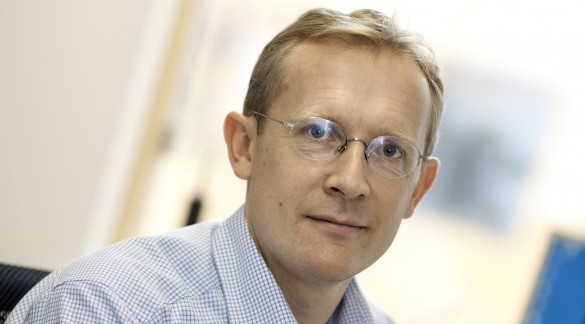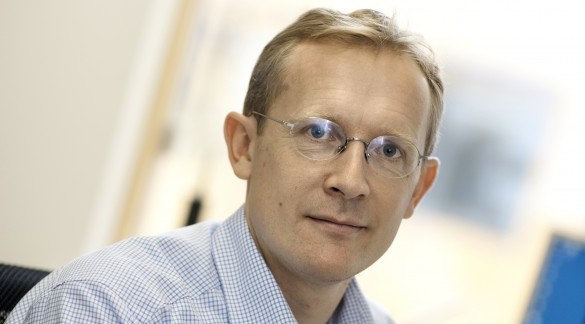

Tim has been researching, teaching and applying new thinking on how people can do new things better for more than 20 years; in particular, he has looked at innovation partnerships between established firms and start-ups, and how we can make them work.
Thanks very much Tim for agreeing to answer our questions; first of all, why is innovation of importance?
For me innovation is simply about doing something new to make things better. Innovation can change the world; that’s why it matters.
What do you think are the key aspects of innovation?
We’ve narrowed it down to three main areas of focus; and we’re talking about practical issues here – doing things better – not just about theoretical concepts.
How do you work with companies like ENGIE?
We’re not technology experts in specific industry domains. It’s more about the process, and looking at issues such as:
It’s all about the interplay between the business, the technology and the context.
ENGIE has the OpenInnov programme, where we ask for innovative ideas from start-ups – is this a good approach?
Yes ENGIE and start-up businesses can benefit each other. Start-ups don’t have the ‘path dependencies’ of large companies. Start-ups are not constrained by what’s gone before and they don’t have to support a huge infrastructure or make a large return on investment from previous activities.
But start-ups face a different set of challenges. They have to understand what they can’t do or are not very good at. That’s why it’s useful for them to seek advice and guidance, and support from others. But they’re not always very good at that, they often find it hard to do.
It’s the case of the elephant [big business] and mouse [start-up] problem – the elephant has size, scale and resources, while the mouse has agility, speed and the idea. They need each other but getting them to work together is not easy; just as in the animal world, the two do not really behave like each other.
So in the drive to find new innovations is collaboration the key?
Collaboration is absolutely the essential and there are keys to doing it well. The first is alignment. ENGIE and your start-ups are not always going to be aligned in with each others aims, objectives or strategies which may change in response to a changing context; so you need to reach an understanding of each other’s goals, remain flexible, but recognise when it is time to go your separate ways.
The second is awareness – smart partners invest time in the relationship. In our experience, the successful collaborations were between start-ups who had people that understood big business and established companies that had people who appreciated start-ups.
One approach to achieving alignment and awareness is the ‘entrepreneur in residence’ at the established firm; or the ‘champion’ with big company experience going into the start-up. Placing people close to your partner organisation can make a real difference to communication and mutual understanding.
How can academics, ENGIE and start-ups complement each other in innovation?
We’re not all the same. But we do all want same thing – to make the world a better place, to see our ideas being used, and to add economic and social value to what we do.
Broadly speaking, academics use money to develop knowledge; while business uses knowledge to make money. Contrary to what people may think, most academics do not all live in the proverbial ivory-tower; they do want their research to be useful and used. Start-ups have the freedom and flexibility to focus on their own success and make quick decisions but need the support of big business. Larger companies now know they cannot dominate any more through having the biggest R&D, they have to collaborate with academics and startups.
To work well together, we need to appreciate the strengths and weaknesses of each other. Academics have the core knowledge underpinning the innovation. Big business has to be more nimble but getting the elephant to dance is not always easy. Start-ups are nimble but have to be realistic about the costs and timescales to take the innovation to market.
So the solution is trying to get everyone to cooperate, through mutual alignment, understanding and flexibility.
Lastly, what innovation will have an impact on the cities and communities of tomorrow?
One innovation is the changing way we are thinking about production and consumption. I have Professor Steve Evans, Director of Research in Industrial Sustainability at the University of Cambridge to thank for this particular prediction. He describes factories of the future where the water coming out is cleaner than the water going in; the air coming out is cleaner than the air going in, and where the raw materials are either grown locally or scavenged from other factories and waste products. The products themselves are customised and co-created. As a result, people will want those types factories at the end of their street.
Thank you Tim for your fascinating insights into innovation.
You can meet Tim at Venturefest East on 24 May 2016 at Newmarket Racecourse, Suffolk. He will be delivering keynote four from 2.05 to 2.25pm. ENGIE will chair session two – The Fast & Furious Pitch-off, from 11:30am to 1.00pm.
For more information, go to: www.venturefesteast.co.uk
Sign up for the ENGIE Innovation Newsletter